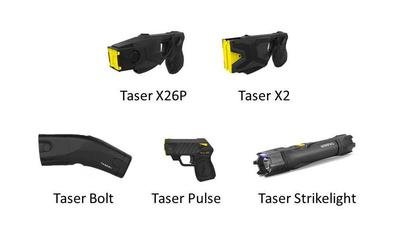What is a Taser? What does it do?

A Taser shock is simply neuromuscular incapacitation (NMI). NMI causes involuntary muscle contractions and momentary loss of control of some muscle groups for those shocked. Typically lasting about 5 seconds for each pull of the trigger for law enforcement applications. The less lethal device can be a gamer changer in achieving compliance with non-compliant suspects and those in an institutional setting.
A Taser is typically deployed very much like a firearm, with the spread of the probes being about 8 degrees from the point of deployment to the impact (known as the spread). Dart spread at close range is a concern as much as it is at long range. Often referred to as splitting the belt to achieve the highest effectiveness and neuromuscular incapacitation at close range.
Larger the muscle groups effected the better. The back is the ideal location for probe deployment.
Taser cartridges are available in 15, 20 and 25 feet. With the most effective deployment between 7-15 feet.
A drive stun can be utilized both for pain compliance and as a third point of contact during deployment of the probes. Pain compliance is just that, it does not include NMI, the shock and does not interfere with muscular movement. The third point of contact ensures the greatest achievable NMI.
Typically the probes would be deployed and then the user would drive stun the individual for a third point.
After the deployment, it is normal for a person's muscles to relax. This opportunistic time is ideal for restraining them.
When Taser Probes are deployed, a confetti-like material is also sent flying referred to as AFID's (anti-felon identification). These small bits include the taser cartridge serial number, ensuring investigators know who deployed their taser.

Some real-world deployments of Taser's.